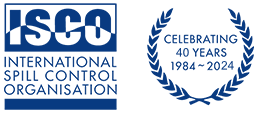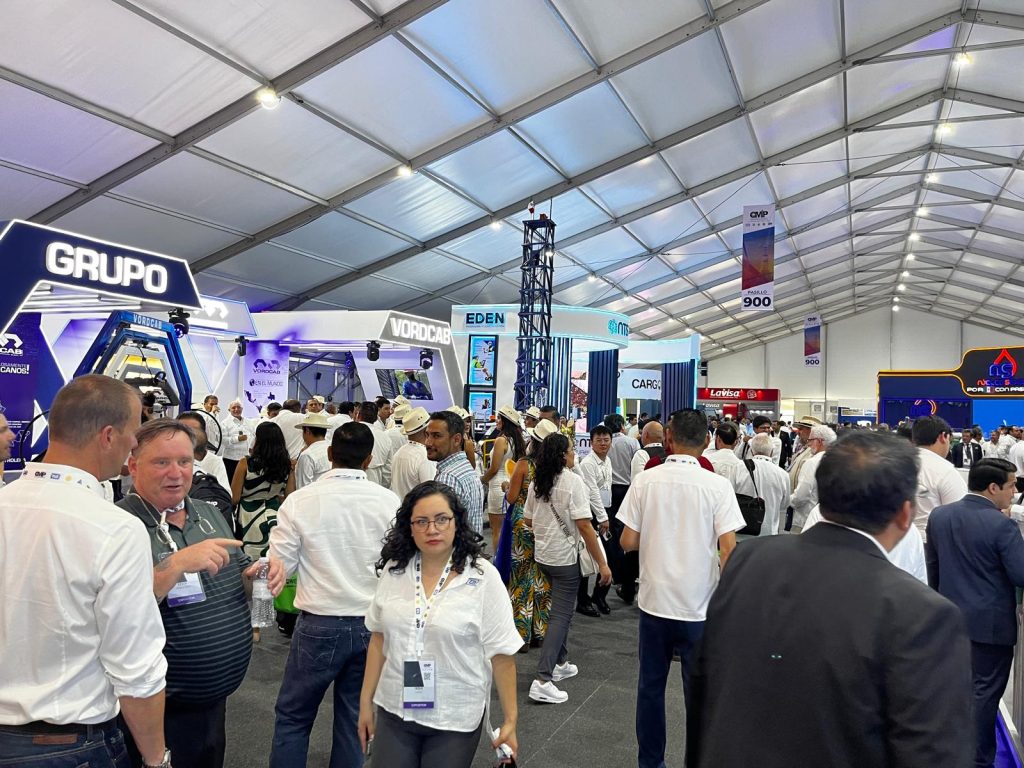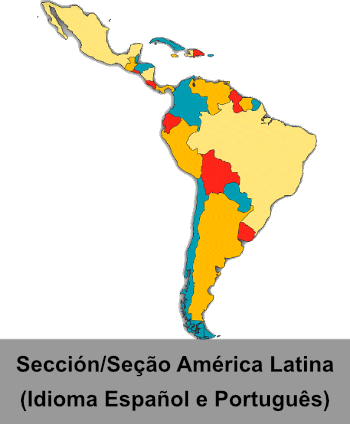Tampico, 19 to 22 June 2024
Author: Carlos Sagrera, MSc
ISCO Representative Latin America (Spanish Speaking)
The 18th Mexican Petroleum Congress (https://congresomexicanodelpetroleo.com/) was held in the city of Tampico (state of Tamaulipas) from 19 to 22 June. The birthplace of the Mexican oil industry (first wells in 1904 and the Faja de Oro in 1916), Tampico welcomed thousands of participants from the hydrocarbon exploration and production sector, in an event with more than 140 stands. They were essentially suppliers of all types of oil, maritime and land services of the main Mexican oil company PEMEX and other private sector companies with exploration projects in the country, as well as manufacturers of technology for use in the industry. Mexican federal and state energy and regulatory authorities were also there, allowing interaction with key industry players. Along with them, national stands from countries such as Canada and the Netherlands were present, with their companies involved in the Mexican oil industry. But especially noteworthy was the presence of the stands of companies from the Republic of China, oil and related services companies, which are on an investment offensive and looking for opportunities and Mexican partners, undoubtedly due to the opening of Mexico and its new offshore and onshore exploration projects, both for oil and natural gas. And, of course, behind this offensive, the US market, increasingly restricted for China, which is looking for alternatives to enter the neighbouring country through NAFTA.
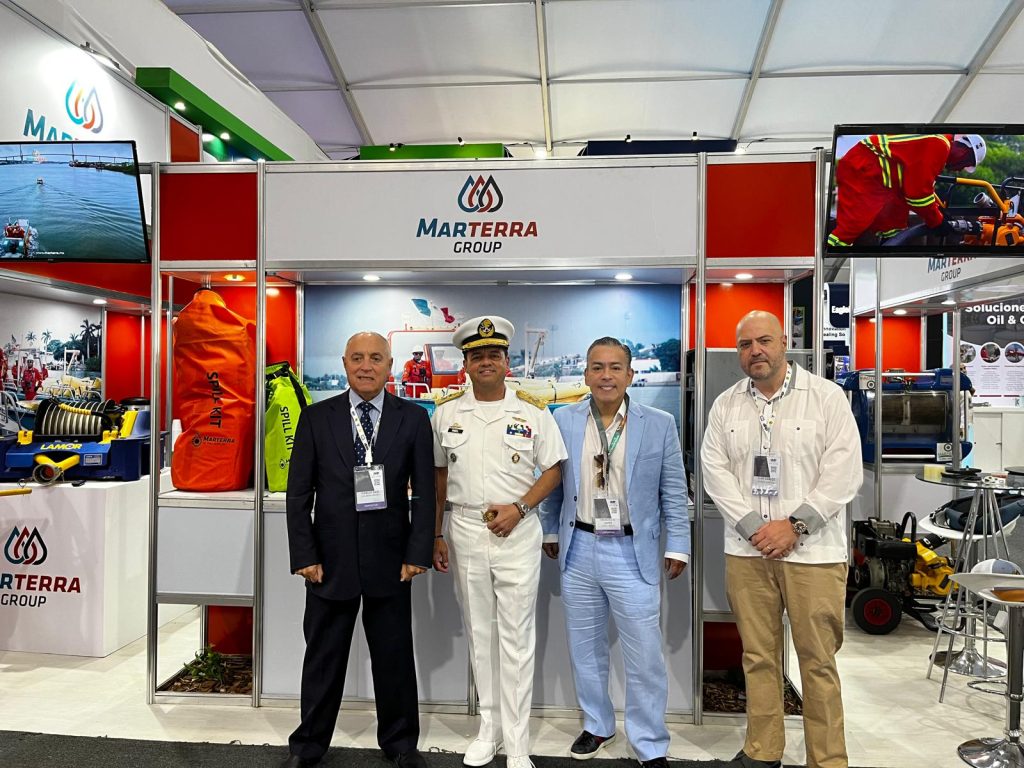
The inauguration was attended by the Director of PEMEX, Mr. Octavio Romero Oropeza, who in his speech, with an approach of political bill passing in an administration that is in its term, marked the deficit of refined production at the beginning of his administration (year 2018 – 500,000 bls per day) and the objective of finishing this year refining 1,400,000 bls per day, for which the new Dos Bocas Refinery (https://www.elsoldetampico.com.mx/local/pemex-alcanzara-la-autosuficiencia-en-combustibles-el-siguiente-sexenio-octavio-romero-12118067.html) will be key. As reported in our ISCO Newsletter N°942, in parallel to the exhibition, technical activities were held with presentations and a very comprehensive programme (congresomexicanodelpetroleo.com/Sesiones_Orales.html) on topics ranging, for example, from velocity modeling and seismic imaging to artificial intelligence (the most mentioned topic!) and assisted drilling engineering. It was noted that the location of hydrocarbons in Mexico has become increasingly complex due to the intricate geology of reservoirs and hence much emphasis on these types of technologies during the event. But the main focus of the event was on “Digital Transformation to Bring Certainty and Efficiency to Mexico’s Oil Industry”, i.e. the whole topic of Digitalisation (Big Data Analytics, the Internet of Things, Artificial Intelligence, Automation) of the enormous amount of Data to be managed and analysed from specific assets (which ultimately helps companies to be more predictive), being very well represented in the stands of the technology companies and in the conferences and courses themselves.
The space for the Keynote Lectures (www.congresomexicanodelpetroleo.com/Conferencias%20Magistrales.html), allowed to listen to some presentations by industry and regulatory authorities in Mexico. The lecture by Mr. Angel Cid Munguía, Director of PEMEX Exploration and Production, on the topic “Mexico in the Energy Transition”, allowed to hear phrases such as “Mexico is making progress in its commitment to the energy transition”, but immediately that “… greater investments are needed to achieve its zero emission goals”. And, of course, that “… fossil fuels still represent the largest source of energy globally and will continue to do so for the next two decades… and therefore maintaining a production level of 1.8 to 1.9 million barrel per day until 2040”. Past message. Some presentations pointed to the revolution that the 3D seismic method was at the time in Mexico, allowing to identify a series of complex reservoirs. As an example, the exploration in Veracruz, which required 8 billion cubic feet of gas per day, and thanks to 3D, was achieved. One of the specialists awarded by AMGE at the event, Engineer Francisco Sánchez de Tagle, indicated in his thank you message that “The future of hydrocarbon exploration relies on high-quality processes where the geological model is fundamental. Understanding rock velocities and integrating them with good data is crucial. Teaching must be practical, working in groups to select the best interpretations”. Also, a message of sorts and this time for young Mexican professionals, who thus understand what lies ahead and what has to be learned in the areas of structural and stratigraphic seismic interpretation.
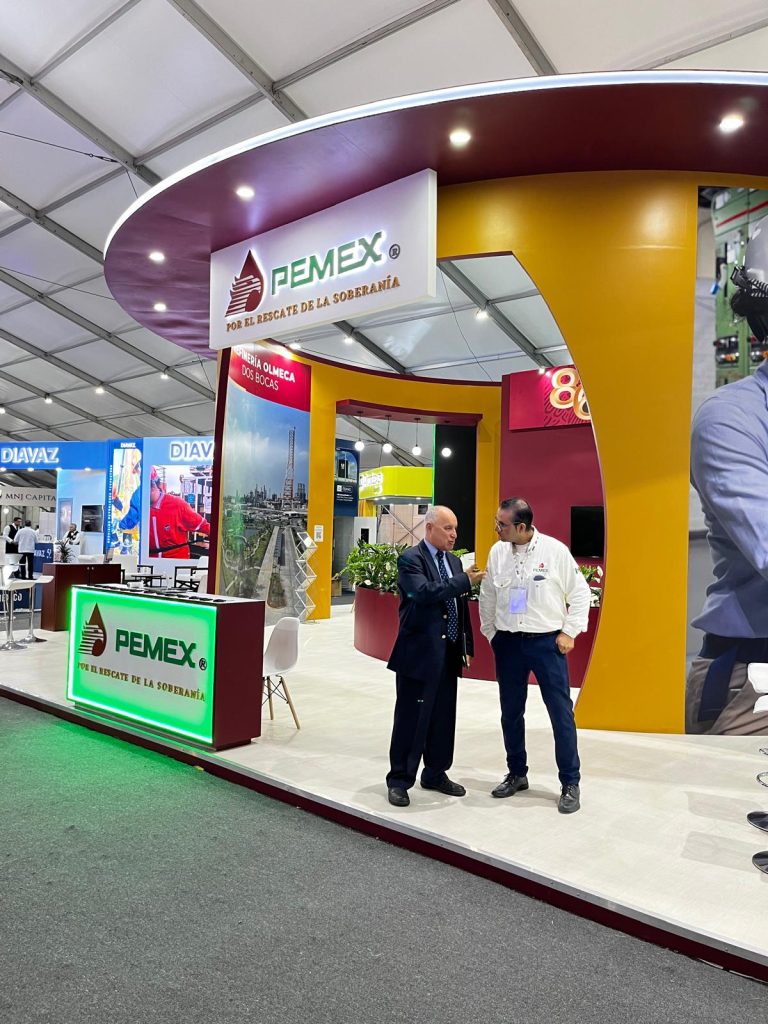
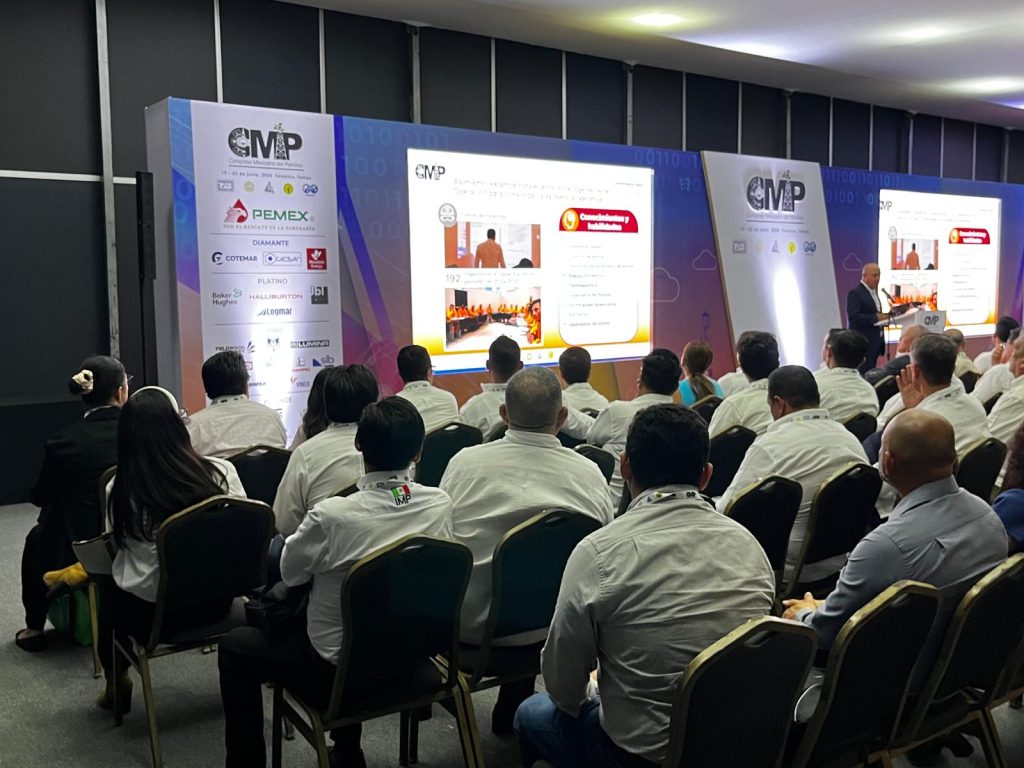
Very innovative were the presentations with the E-Roster system (www.congresomexicanodelpetroleo.com/Sesiones_e-poster.html), which allowed the authors of the thematic posters to present a short power-point presentation (every day) explaining the content of the posters in a special space. Accustomed to the graphic and paper-based thematic posters of the IOSC, Clean Gulf, Interspill, this system gives the opportunity to understand them in detail and interact with the authors. In our opinion, this is an excellent idea to imitate, which gives much more value to the hard technical work that is condensed in these posters, makes them much more visible and does justice to their quality.
What was surprising, and noticeable, was the lack of conferences focusing on environmental issues and the potential impact of industry in this respect. One exception was a specific forum on technology trends for Decarbonization, the gradual process of reducing carbon emissions into the atmosphere. There, the critical role of technology was emphasized, highlighting its importance in decarbonizing the energy sector through electrification technologies and the use of hydrogen as an energy vector. And on this environmental issue, and specifically on the control, prevention and response to hydrocarbons, it is worth mentioning the presence of only one OSRO company, which was Marterra (https://marterra.com.mx/en/), a corporate member of ISCO and with main activities in the state of Tamaulipas, with its stand which was very well visited and which showed videos of operations and exhibited its own recovery equipment such as brush skimmers, disc, suction, etc. (photos attached). Probably, this absence of other companies specialised in the subject at events of this type in Mexico is symptomatic of the gaps that exist in this country, with the consequent shortcomings in the responses that should be more effective, and the need for the regulation of spaces for OSROs and their activities. However, there is other good news in Mexico. A very important step has been the role of the CIGoM that has generated new tools for the Assessment of Spills in the Gulf of Mexico (ISCO Newsletter N°932 – April 2024 – https://spillcontrol.org/2024/04/13/el-consorcio-de-investigacion-del-golfo-de-mexico-cigom/), allowing rationality in the NEBAs and the consequent operational prioritisations, which will necessarily have to be more effective. Finally, it should also be remembered that the Ministry of the Navy (SEMAR) has recently (December 2023) updated its National Contingency Plan (www.digaohm.semar.gob.mx/PROMAM/anexos/Plan_Nacional_de_Contingencia.pdf), which clearly establishes roles and responsibilities for public and private actors at risk of oil spills in Mexico’s Marine Zones, which will necessarily advance prevention and response procedures in the country, something that is very necessary (ISCO Newsletter N°930 – March 2024).
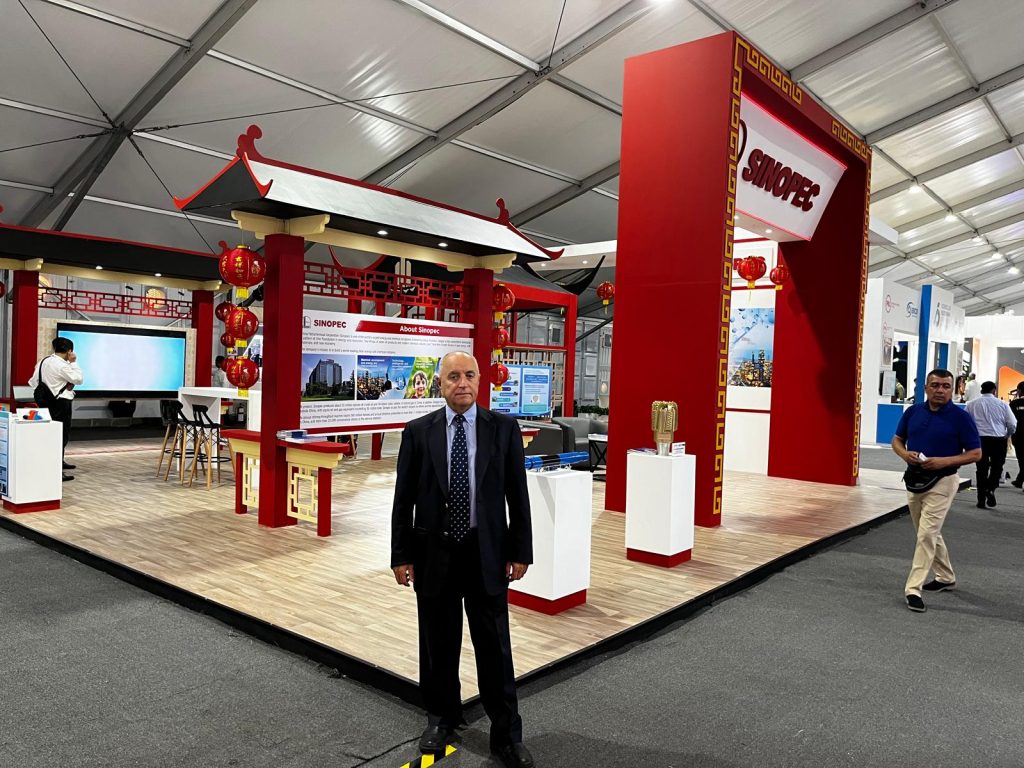
The level and class of the Mexicans is well known, to attend and expose with their culture and recognized kindness, which was very remarkable with the attention in all the Stands, which included musical events and traditional Mexican food, throughout the three days of the event and should be highlighted accordingly. Finally, it is worth mentioning the fact that this impressive and comprehensive event of the Mexican oil industry (probably the largest in Latin America), has the support of PEMEX of course (Mexican Petroleum Institute – IMP https://www.gob.mx/imp) and all its Mexican spin-offs and service companies, but behind the initial idea and organizations such as the Mexican Association of Exploration Geophysicists (AMGE – https://amgemx. org/), the College of Petroleum Engineers of Mexico (CIPM), the Association of Petroleum Geologists (AMGP) and the Society of Petroleum Engineers, Mexico section (SPE Mexico – www.connect.spe.org/mexico/inicio), among others, which ensure the quality and academic and technical level of the event. We believe that this example given by Mexico to Spanish-speaking Latin America could well be considered by other oil-producing nations in our region, on the scale and with the nuances that each reality and situation allow. This ISCO Observer at this event suggests that readers interested in oil issues in Mexico and Latin America, due to its organization, its speakers and above all its contents, consider the possibility of attending and joining the 19th Mexican Petroleum Congress, scheduled for the year 2025 in the city of Acapulco.
